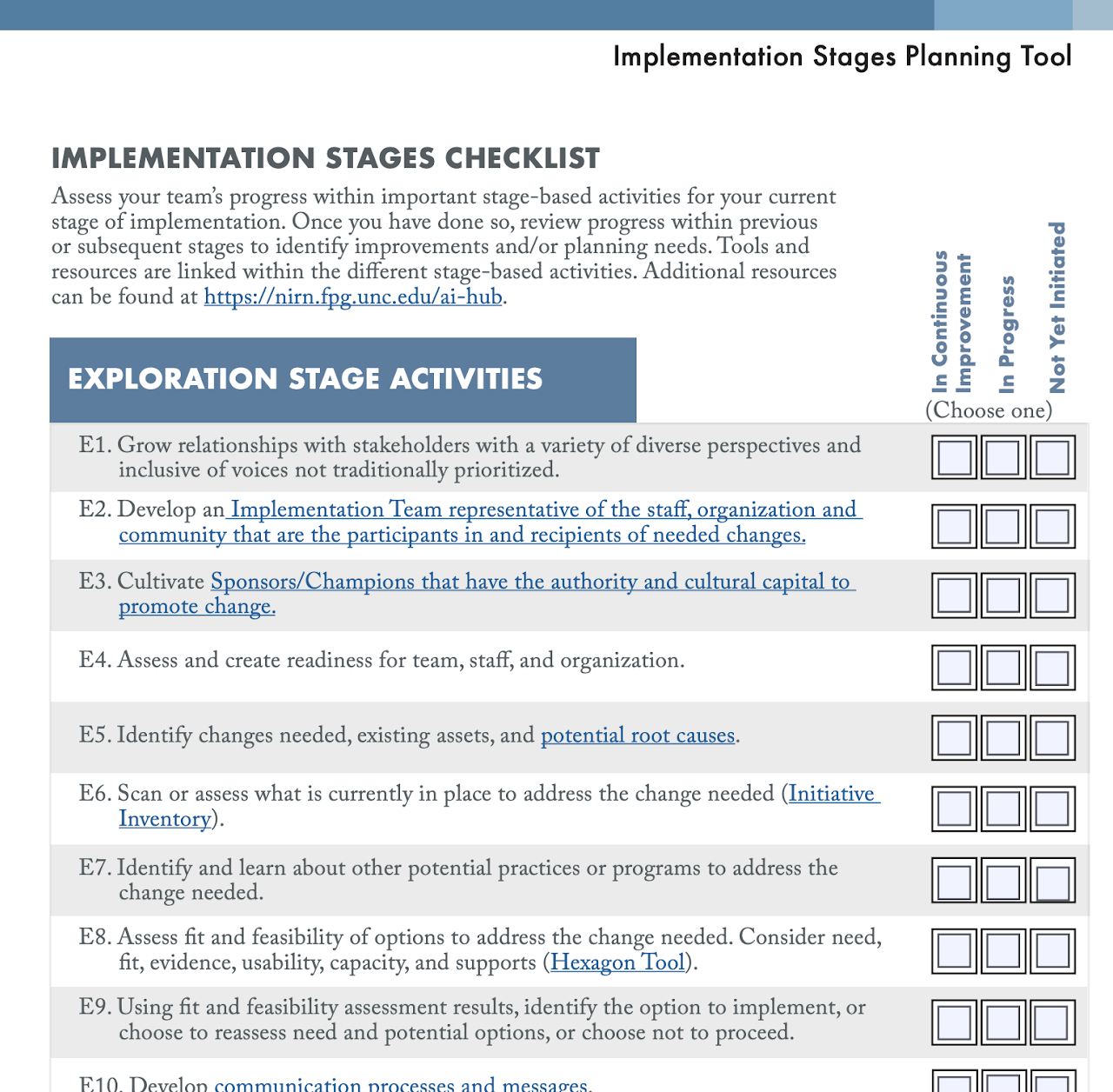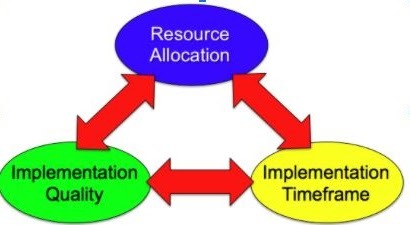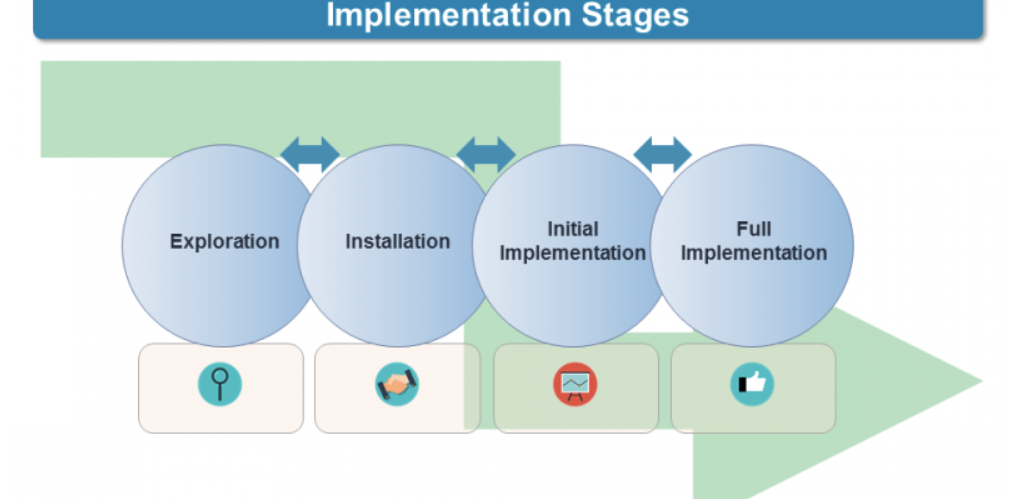Systems
Implementation Stages:
Implementation of reading and behavior MTSS is a process that takes place over time (2-4 years, or more!). It is important to remember that we should not expect to see changes in student outcomes until effective practices have been implemented with fidelity. The National Implementation Research Network (NIRN) provides a variety of resources related to this. The graphic to the right shows the various implementation stages and the arrows indicate that there can be movement in either direction throughout implementation efforts. Each stage is defined below, and a link to a planning tool (outlining activites and outcomes by stage) is included as well.
 Exploration - identifying the need for change, learning about possible innovations that may provide solutions, learning about what it takes to implement the innovation effectively, developing a team to support the work as it progresses through the stages, growing stakeholders and champions, assessing and creating readiness for change, developing communication processes to support the work, and deciding to proceed (or not)
Exploration - identifying the need for change, learning about possible innovations that may provide solutions, learning about what it takes to implement the innovation effectively, developing a team to support the work as it progresses through the stages, growing stakeholders and champions, assessing and creating readiness for change, developing communication processes to support the work, and deciding to proceed (or not)
Installation - securing and developing the support needed to put a new approach or practice into place as intended, developing feedback loops between the practice and leadership level in order to streamline communication, and gathering feedback on how new practices are being implemented
Initial Implementation - the first use of an innovation by practitioners and others who have just learned how to use the innovation Initial implementation is about trying out those new skills and practices, and getting better in implementation. In this stage, we are gathering data to check in on how implementation is going, and developing improvement strategies based on the data. Implementation supports are refined based on data. For example, we might find that a new skill educators are using as part of social and emotional development could be further strengthened by additional coaching from an expert; so we would think about how to embed these strategies into ongoing coaching opportunities, and how we would gather data on if the coaching is leading to the improved use of this skills.
Full Implementation - the skillful use of an innovation that is well-integrated into the repertoire of practitioners and routinely and effectively supported by successive program and local administrations
Moving through the stages:
How fast you move through these stages will depend on the constant tension of three factors regarding implementation illustrated in the figure below. If you want quality implementation, then you may need either more time to engage implementation work or you may need more resources allocated to get the work done.

Developing Effective Systems to Support Implementation
Support for developing local MTSS implementation capacity focuses on three implementation drivers:
- Leadership Drivers are mechanisms to provide direction/vision for practices and allocation of resources to enable the capacity and competency drivers to be in place. The term leadership refers to the function of leadership rather than an individual’s position within the organization.
- Organizational Drivers are mechanisms to create and sustain hospitable organizational and systems environments for effective educational services. The focus is on creating an organizational “host” environment that supports best practice of MTSS implementation.
- Competency Drivers are mechanisms that help to develop, improve, and sustain one’s ability to implement a practice to benefit students.










